Sony RX10 II, RX100 IV and A7R II announced, view our previous live blog from the press conference
posted Wednesday, June 10, 2015 at 1:04 PM EDT

At a press conference in New York, Sony recently announced three new cameras, the Sony RX10 II, Sony RX100 IV and Sony A7R II. We were there, blogging live from the press conference, so follow along below for the events as they unfolded.
Keen to know more? We've just published our Sony A7R II preview, as well as our Sony RX100 IV preview and Sony RX10 II preview, giving you hot-off-the-presses insights into both models. (We're putting the finishing touches on our Sony RX10 II preview as we speak. Update: posted.) If you'd like to find out where these new models stand against their rivals, check out our comparisons at the links below:
-
Sony RX100 IV comparisons
-
Sony RX10 II comparisons
-
Sony A7R II comparisons
Now, without any further ado, let's hit the press conference:
1:11PM ET: Mike Fasulo, President and COO of Sony Electronics, is on stage and introducing three new products. We'll be seeing photos shot using the new cameras by Pulitzer prize-winner Brian Smith shortly.
1:14PM ET: As we all know, the still camera market is on a downward trend, but Sony tells us its premium compact and interchangable-lens market share are still growing.
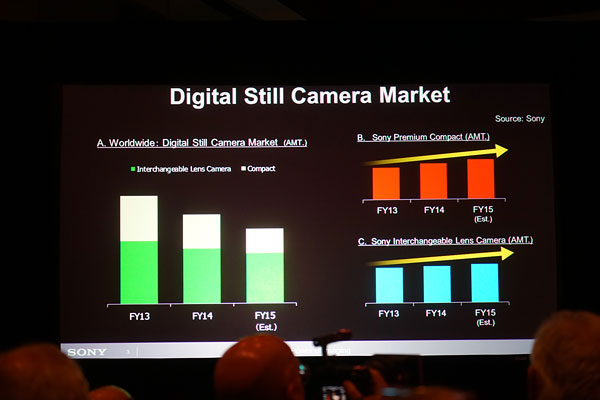
1:15PM ET: Apologies for the slow start, we're a bit new to this live blogging thing, and our software wasn't designed with it in mind. :)
For its new products, Sony has a brand-new 1.0"-type stacked CMOS image sensor with DRAM chip, said to be a world's first!
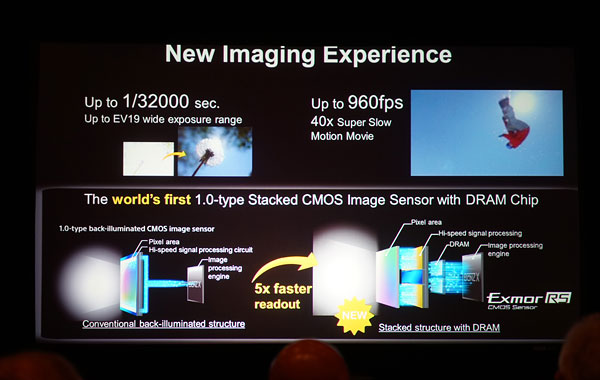
1:19PM ET: Zounds, that's impressive. 35mm full-frame with 42 megapixels, 4K video support and 100K ISO sensitivity!
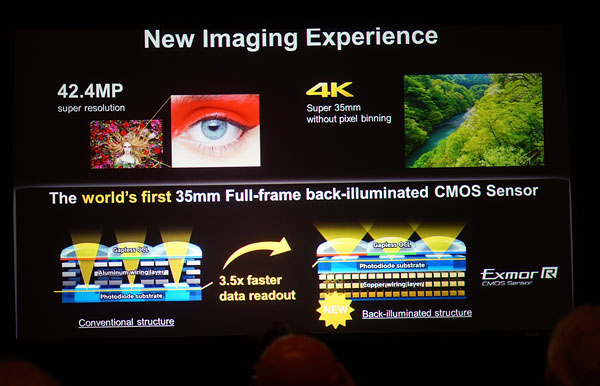
1:25PM ET: Here are the cameras being announced...
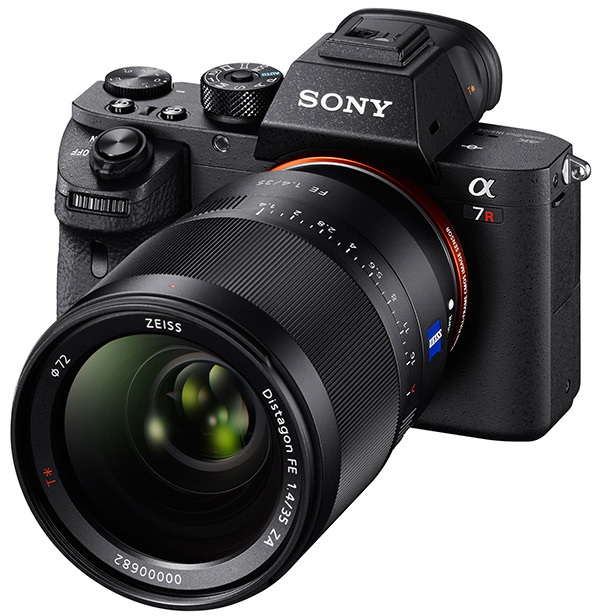
Sony A7R II
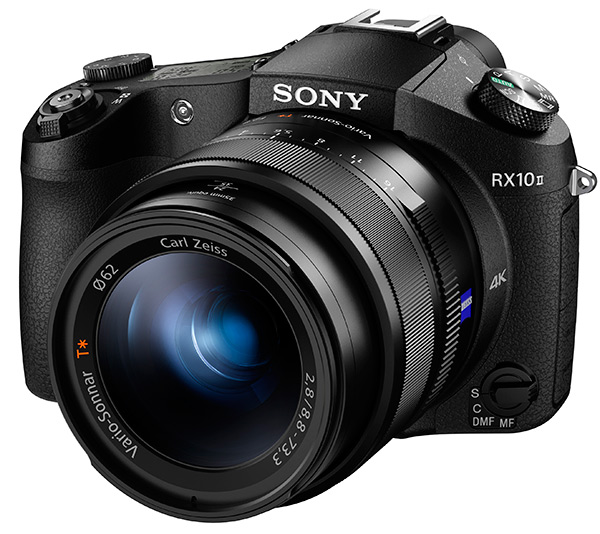
Sony RX10 II
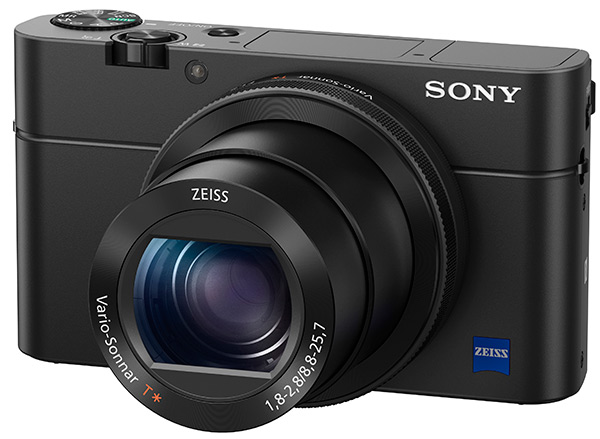
Sony RX100 IV
1:29PM ET: We're looking at the Alpha 7R, first. Very high resolution from a backside-illuminated full-frame image sensor. Don't have to give up on sensitivity to achieve it, either.
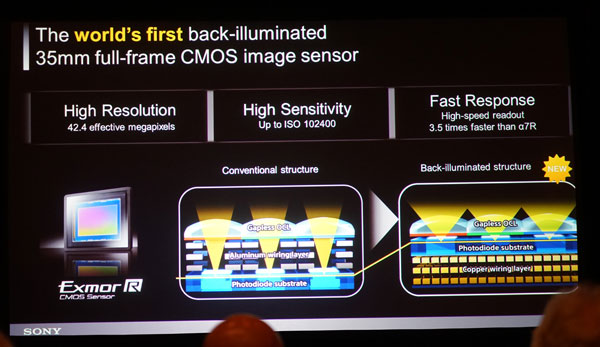
1:33PM ET: BIONZ X image processor, no low-pass filter and the shutter mechanism is designed to reduce vibration so you can take advantage of the high resolution.
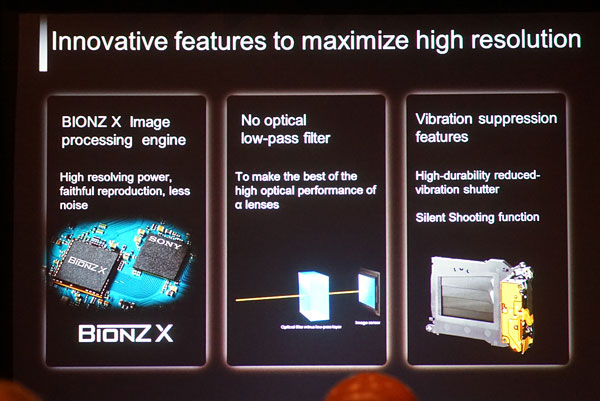
1:35PM ET: Looks like hybrid autofocus has had a pretty impressive upgrade. Five frames per second continuous shooting with autofocus and autoexposure between frames!
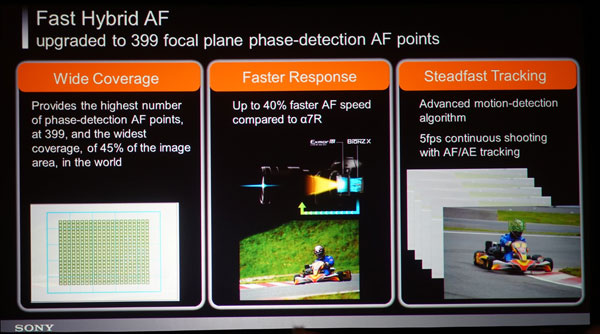
1:37PM ET: Five-axis image stabilization for a full-frame image sensor (!!)
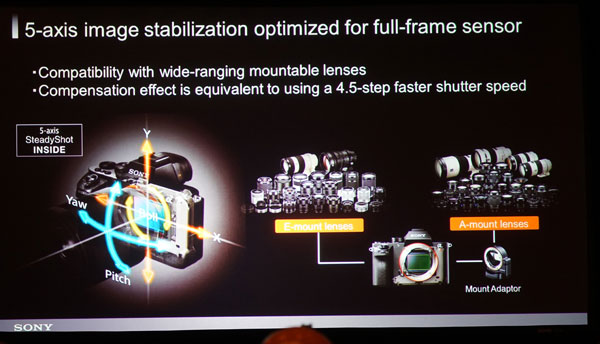
1:38PM ET: Records 4K without pixel binning using a Super 35mm sensor crop!
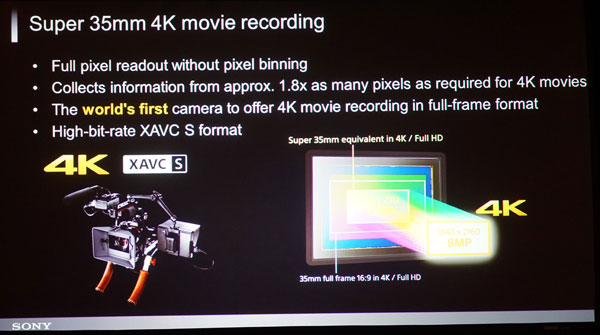
1:40PM ET: Skipping ahead slightly (we're having a hard time keeping up), we've been told that pricing is set at US$1,000 for the RX100 IV, US$1,300 for the RX10 II and US$3,200 for the A7R II.
1:41PM ET: The A7R II has an XGA OLED Tru-Finder, weather-sealed magnesium alloy body, locking mode dial and more...
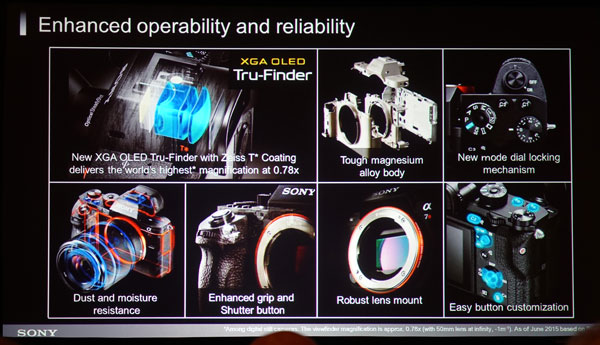
1:44PM ET: A world's first, and we can't wait to get this baby in the lab to see how a full-frame interchangeable-lens camera with a BSI sensor performs! It wasn't that long ago that a 1-inch BSI sensor was an impressive thing, let alone full frame!
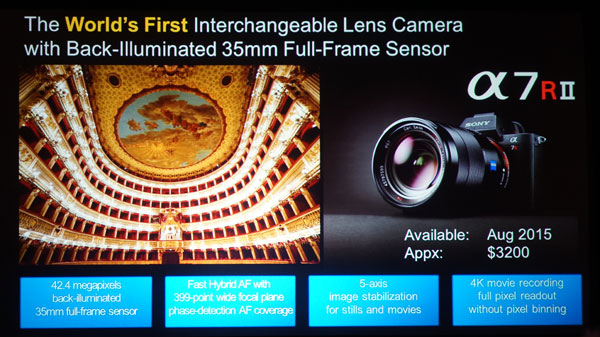
1:46PM ET: We're moving on to the other cameras now...
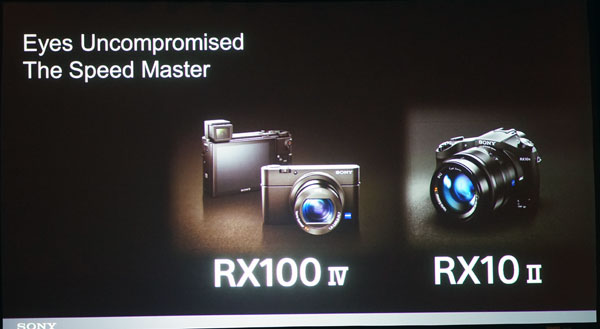
1:48PM ET: We're returning to that interesting stacked 1.0"-type CMOS sensor with DRAM. The small text you probably can't read identifies the pixel area, hi-speed signal processing circuit and image processing engine.
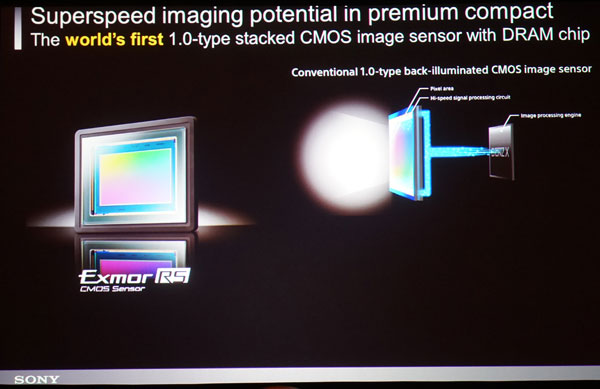
1:50PM ET: Here's a tighter crop on that tough-to-read slide
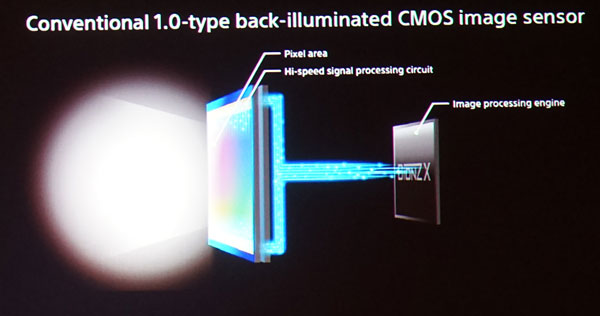
1:51PM ET: While I'm frantically writing and throwing photos online, Production Editor Dave Pardue is going over everything with a fine-toothed comb. His summary of the Sony A7R II
The new Alpha A7R Mark II marks high resolution without the trade-offs. The BSI sensor is "reverse structured" - the heart of the A7R II, with a revised reverse layer of copper wiring delivering faster signal transfer. It houses no optical lowpass filter, utilizes the BIONZ X processor and comes with an all-new shutter unit designed to be twice as quiet as the predecessor. The A7R II can also operate with electronic shutter to avoid vibration when needed.
A newer fast-hybrid AF utilizes up to 399 focal plane PD AF points and provides wide coverage of 45% of the sensor area which is the highest of any current full frame camera. It can work with contrast AF as well, and for the first time a mirrorless camera can focus as fast as one with a mirror using SLR lenses.
The A7R II claims dramatically improved subject tracking ability, and 40% faster AF then in the A7R. It's also been improved with better support for third-party lenses.
It's the first camera to capture 4K video on a full frame sensor with no line skipping, and adds a Super35 crop mode.
It's available in August for US $3200.
1:53PM ET: The new 1-inch BSI chip with DRAM has five times faster readout, says Sony! (Crop of the tiny text to come momentarily.)
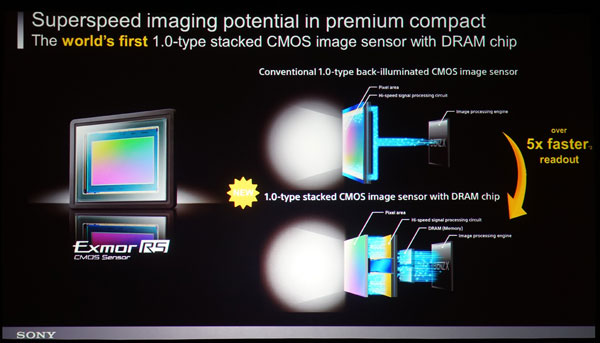
1:55PM ET: Yes, it's DRAM as in memory in that stacked sensor. Perhaps for faster offloading of the sensor data, rather than buffering to a separate chip?
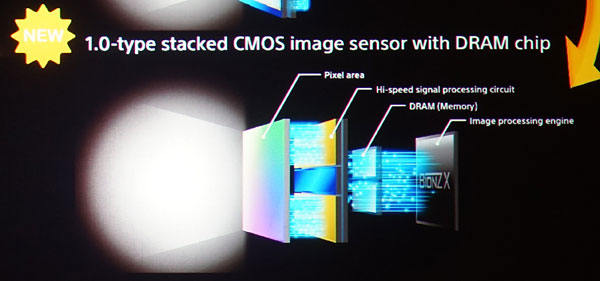
1:57PM ET: 40x slow motion should be fun!
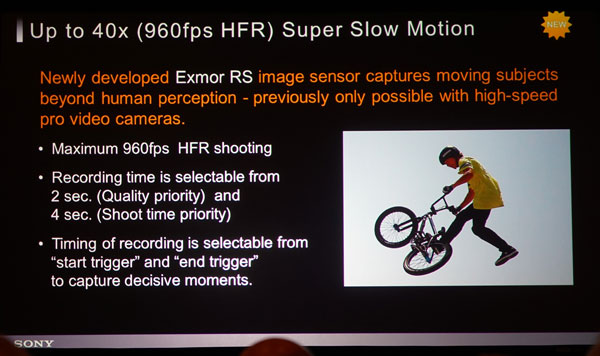
1:58PM ET: The push to ultra high-def 4K video has now arrived in Cyber-shot land! XAVC S format allows 100Mbps bitrate. The RX100 IV is capped at five minute 4K clips, though, probably due to the difficulties of getting heat out of such a compact body.
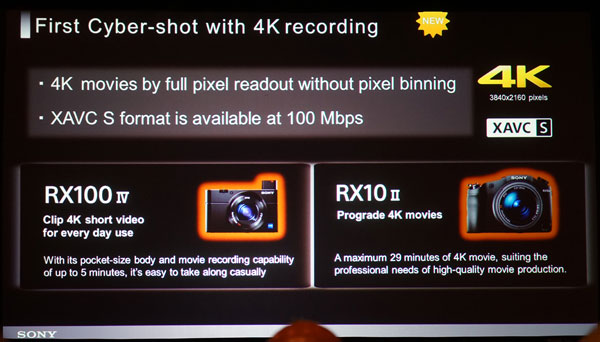
2:00PM ET: Looks like rolling shutter has been addressed, and there's a whopping EV-2 to EV19 dynamic range. Nice!
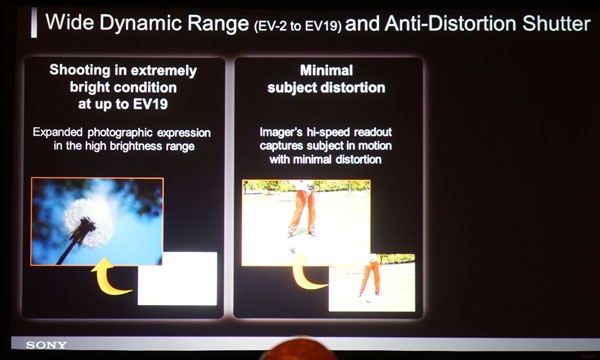
2:02PM ET: The RX10 II has a 24-200mm f/2.8 zoom, and the RX100 IV sports a 24-70mm F1.8-2.8 zoom. Both get Bionz X, but only the RX10 II has Fast Intelligent AF with a claimed 0.09 second time to determine focus lock.
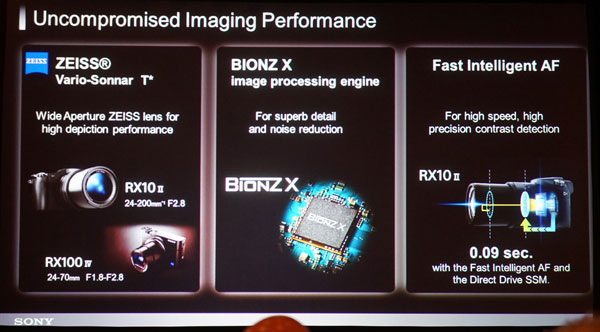
2:05PM ET: A quick recap of the RX100 IV in the image below. You'll be able to get your hands on one next month!
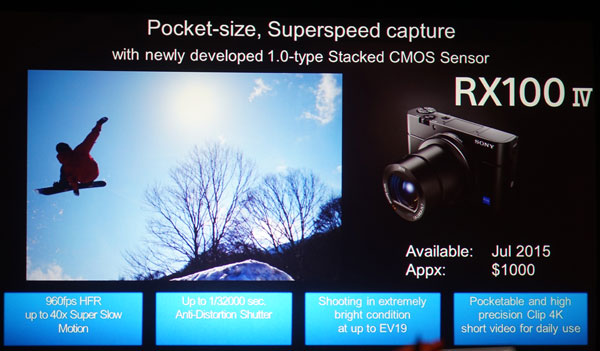
2:06PM ET: And a recap for the RX10 II. Again, this beauty could be in your hands just weeks from now! This is going to be a fun summer. :)
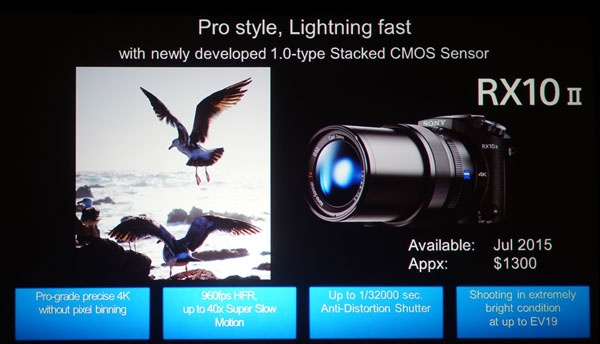
2:08PM ET: This analysis just in from Production Editor Dave Pardue:
In the Cybershot world Sony has really been putting in the engineering time, it seems. Both the popular RX10 and hugely popular RX100 lines boast substantial upgrades in the form of the RX10 Mark II and the RX100 Mark IV. Both models are touting the world's first 1.0 "typestacked" CMOS sensor with a built-in processing circuit and a large amount of DRAM built into the sensor chip itself!
What does this mean to us camera enthusiasts? A reported ability to shoot up to 860 [Edit: Correction, that's 960] frames per second for either 2 seconds at "quality priority" or 4 seconds of "shoot time priority". These are also the first Cybershot cameras to capture 4K video in-camera, both at 100Mbps. Because the RX100 IV is so small it's limited to 5 minute clips, but the beefier RX10 IV can shoot the standard 29 minute clips without overheating concerns.
Now check this out: The stacked sensor design also allows for a new electronic shutter speed of 1/32,000th of a second! This will surely come in handy for times when conditions are bright but you still want a super-bright aperture for shallow depths of field.
These intriguing upgrades will be available in July 2015. Pricing is set at US$1,000 for the RX100 IV, and US$1,300 for the RX10 II!
2:10PM ET: There's a nice external monitor accessory for the A7-series cameras, too. 3x or 6x enlargement, focus peaking, S-Log display assist and Full HD resolution...
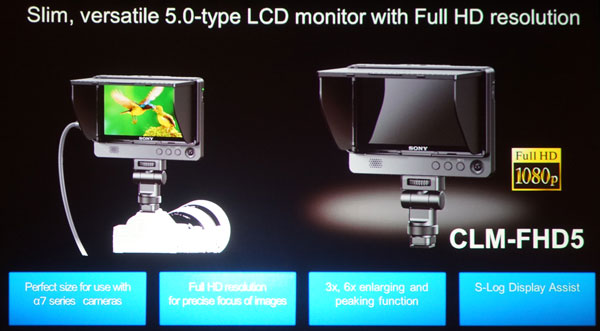
2:14PM ET: The object of desire. How much do you want one?
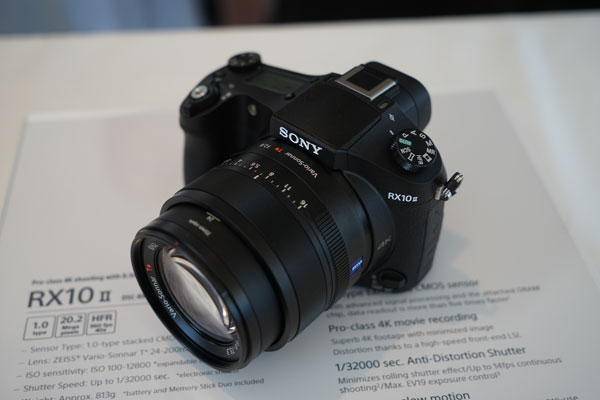
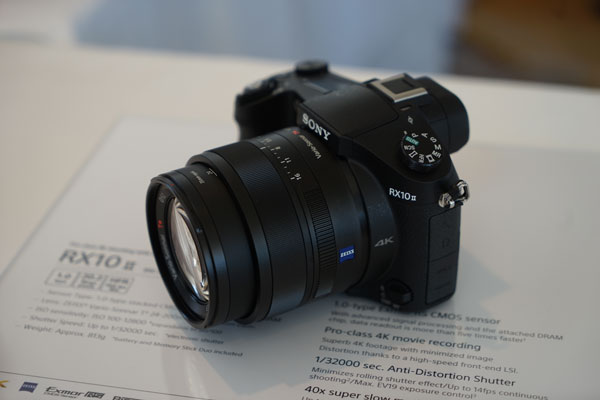
2:23PM ET: Here's the mag-alloy body for the Sony A7R II:
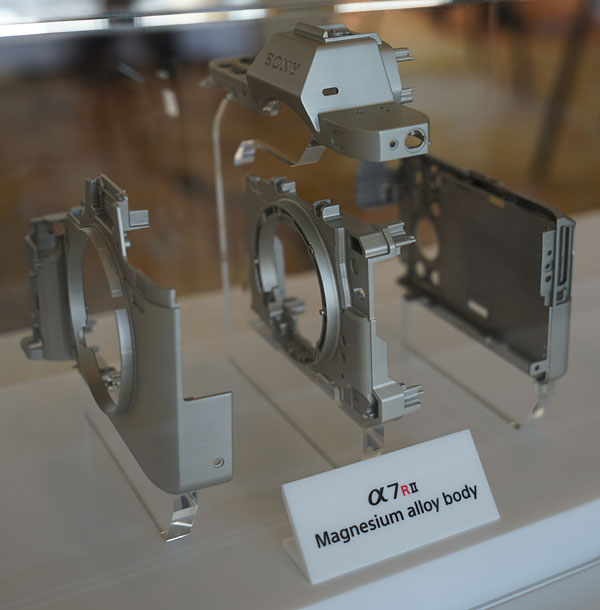
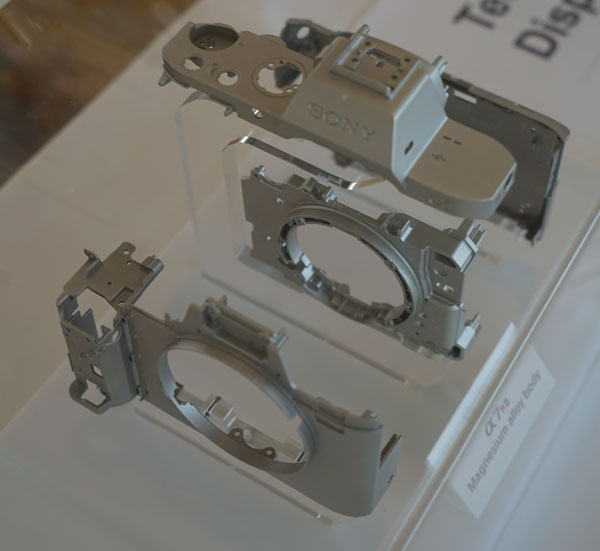
2:26PM ET: It's the groundbreaking sensors that are the heart of this story -- and the heart of these cameras -- so we know you'll want to see them. Here you go, camera fans!
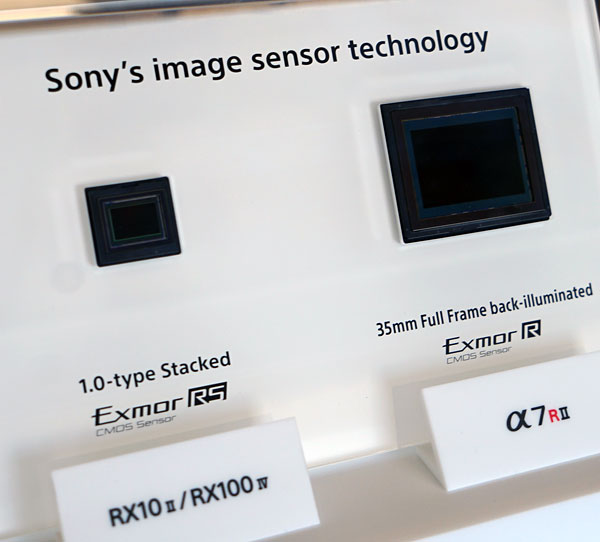
2:29PM ET: Here's a couple of tighter crops on those sensors.
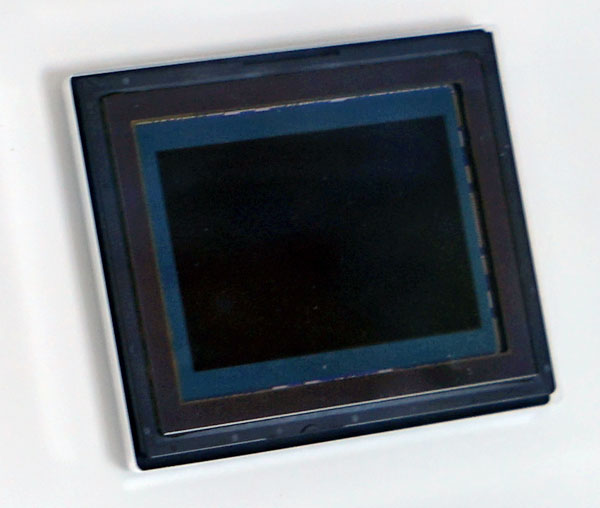
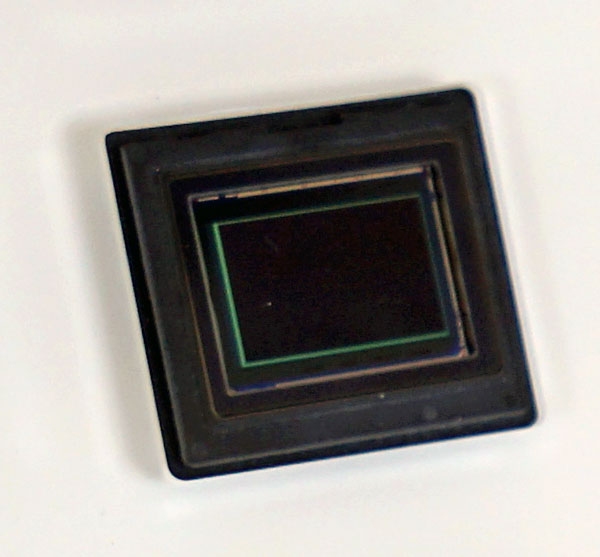
2:32PM ET: Here's the Organic LED panel and eyepiece lenses for the Sony A7R II's electronic viewfinder.
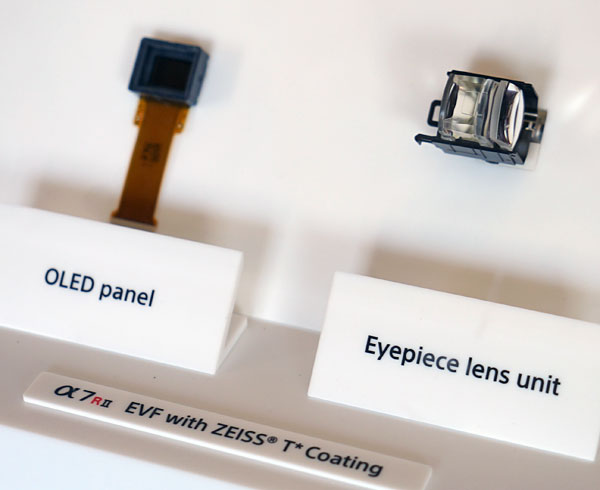
2:33PM ET: And here's the electronic viewfinder for the Sony RX100 IV.
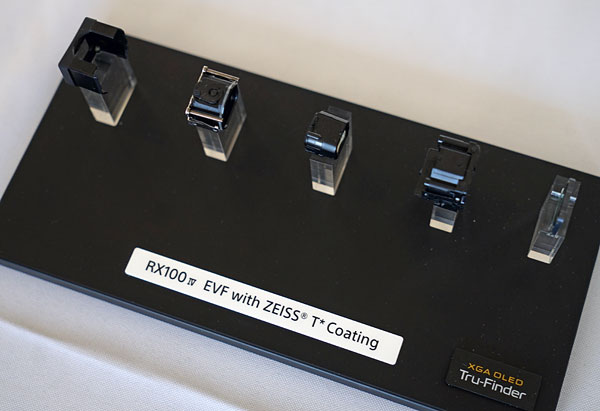

2:36PM ET: It's hands-on time! A whole raft of photos just came in from the team in New York. It'll take a few minutes to process them, so bear with us. Here's a teaser!
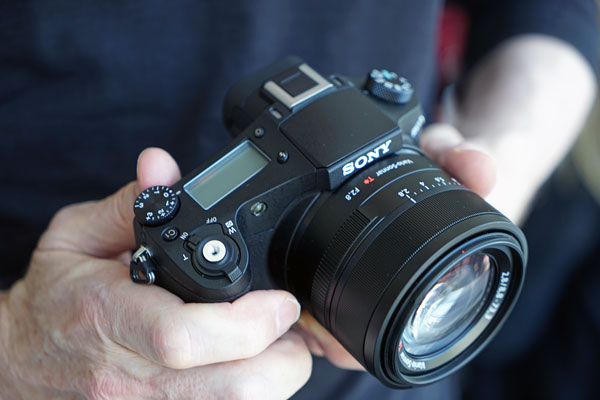
2:46PM ET: Here's the Sony RX10 II from all angles:
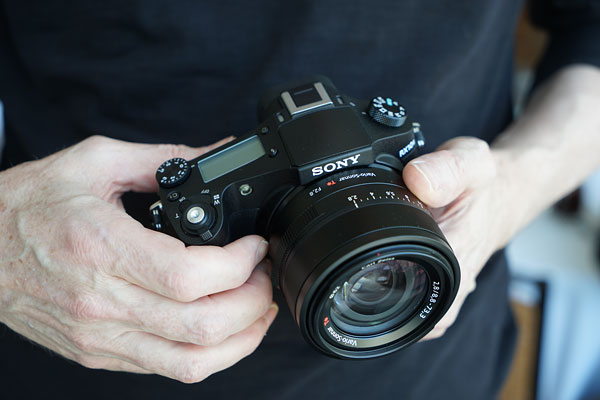
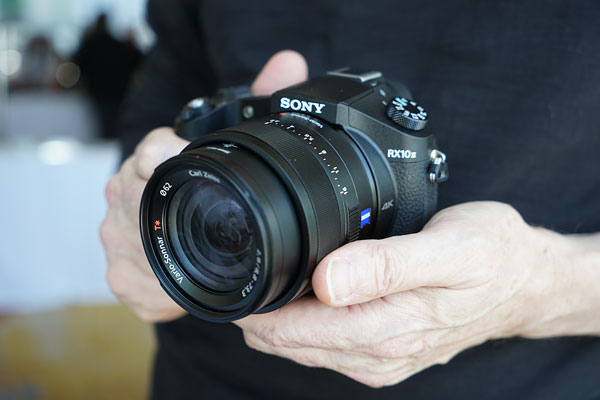
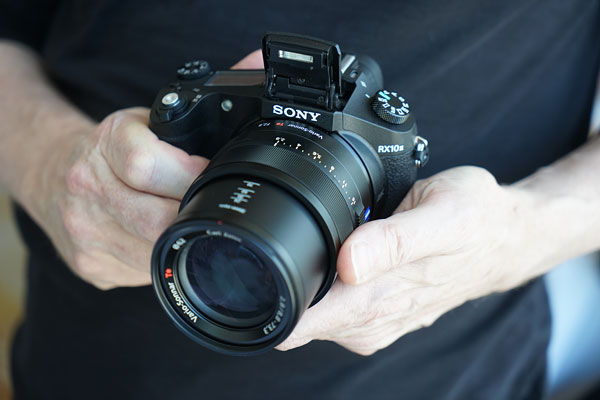
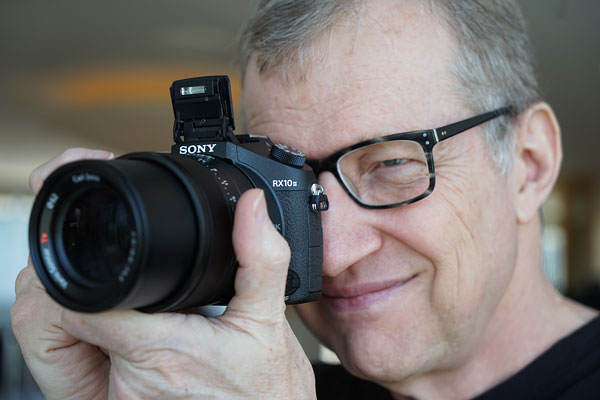
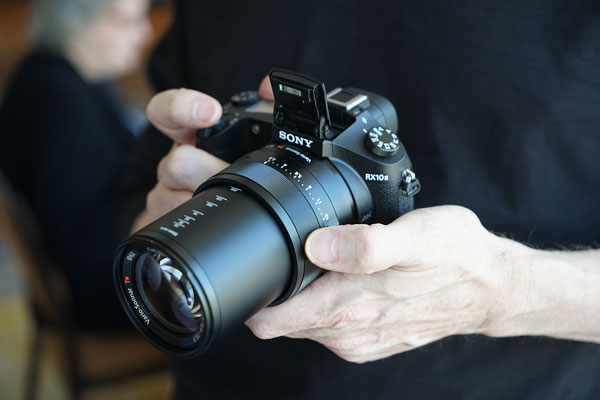
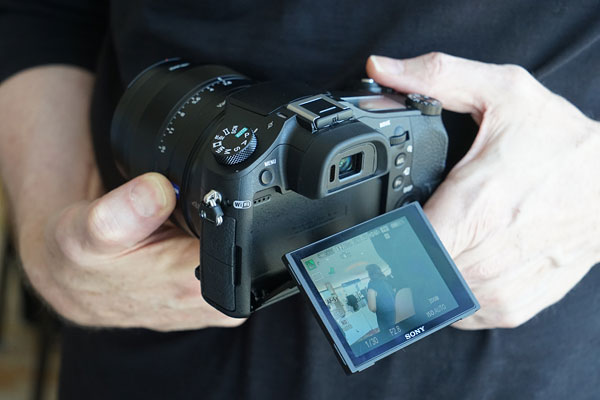
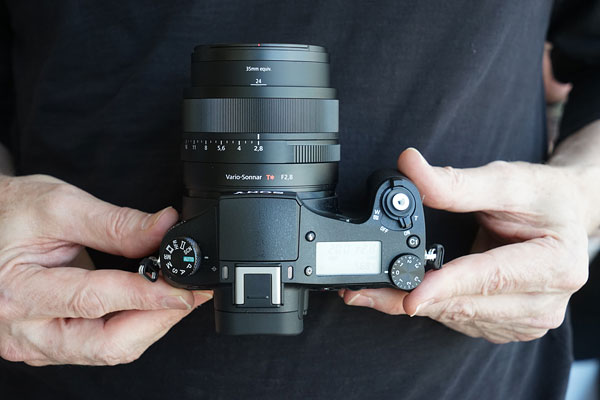
2:54PM ET: Here's a selection of shots showing the Sony A7R II. Next up, the RX100 IV -- bear with us!
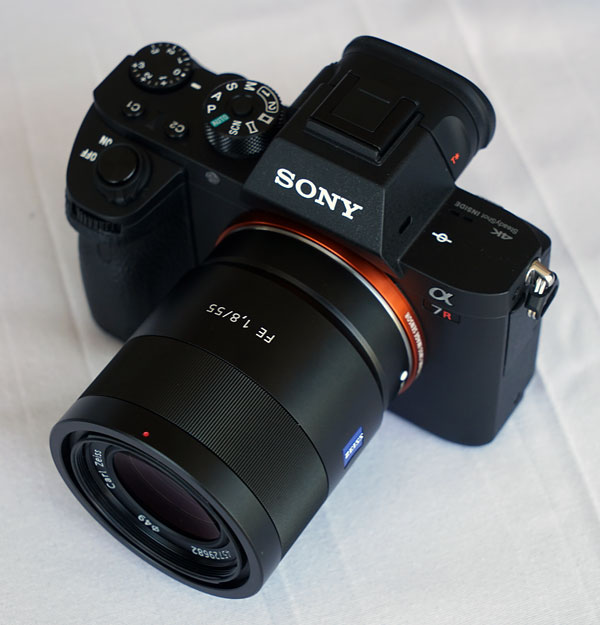
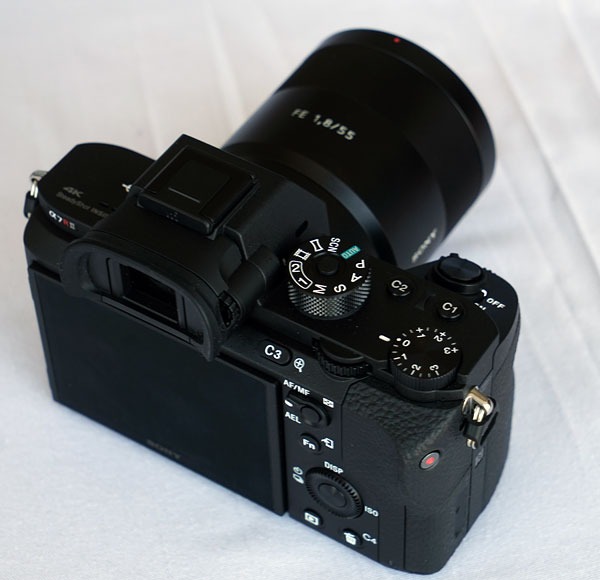
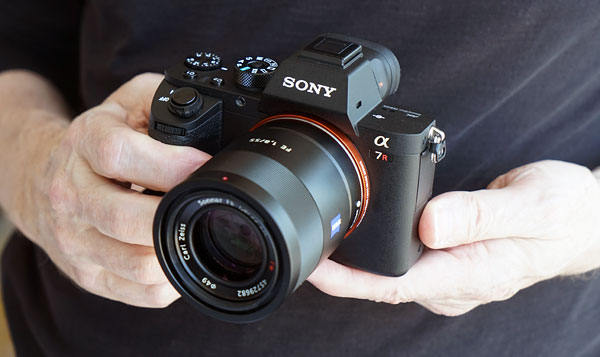
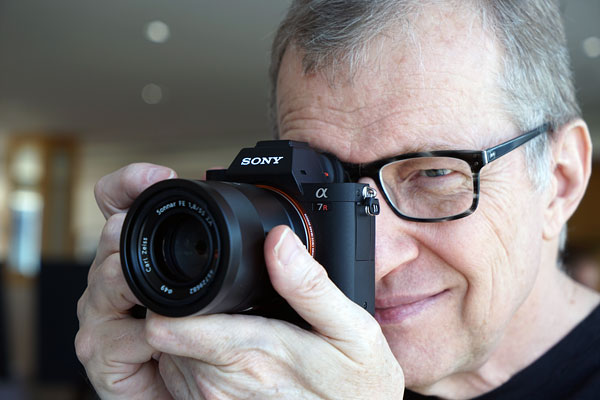
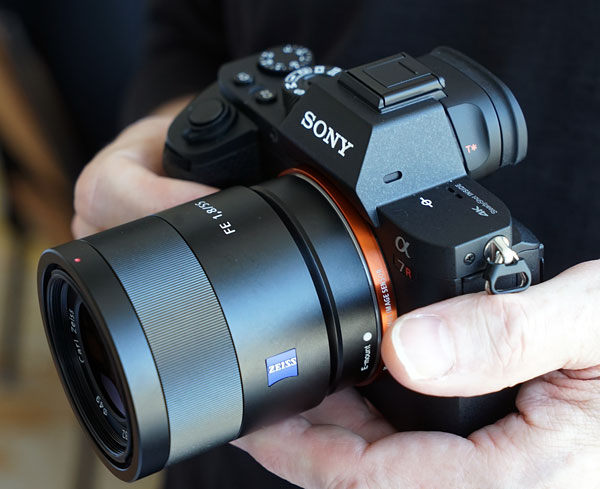
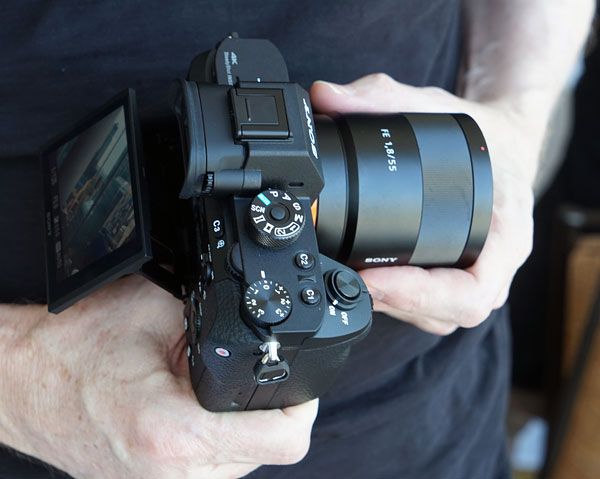
3:04PM ET: And following is the Sony RX100 IV. That about wraps it up for the photos, unless we stumble on one we missed uploading. We're going over our notes now with a fine-toothed comb to see if there's any more info we missed mentioning during the manic rush!
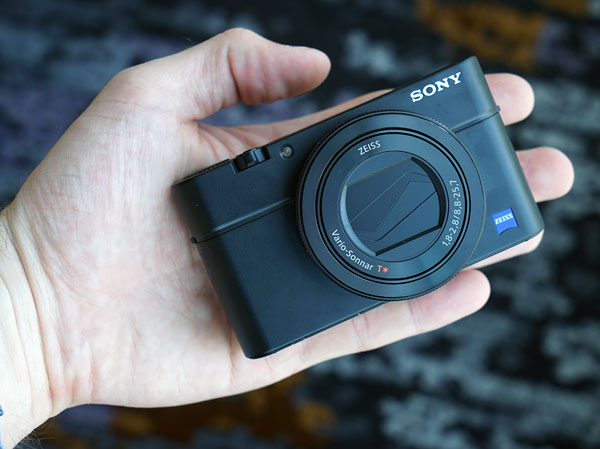
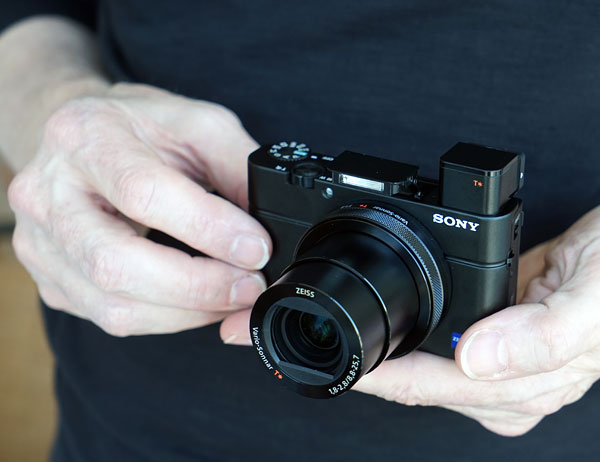
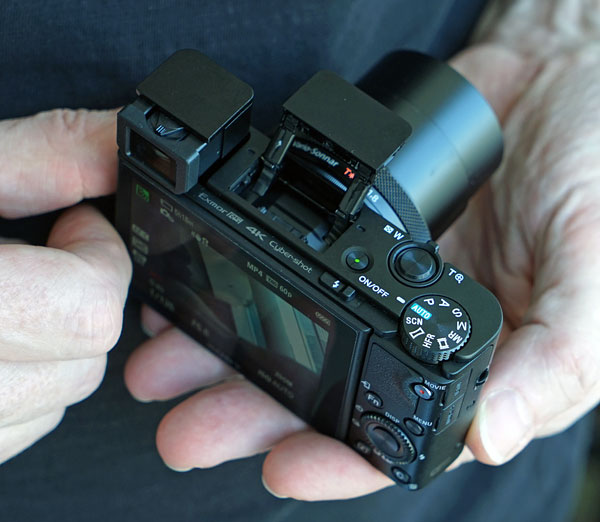
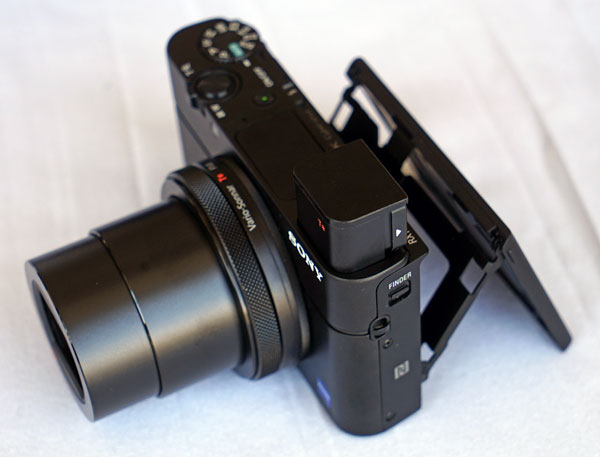
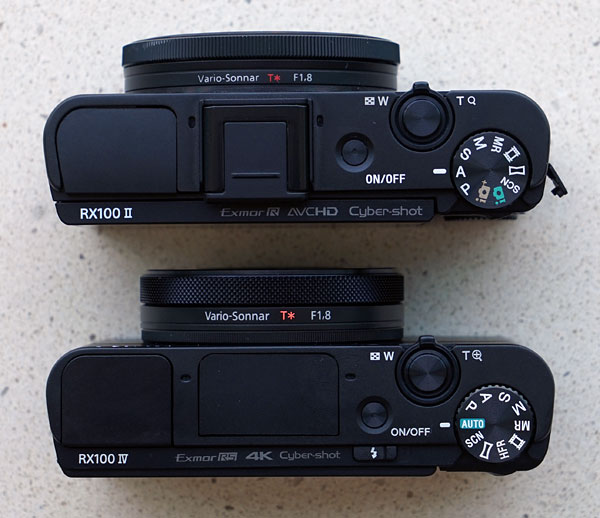
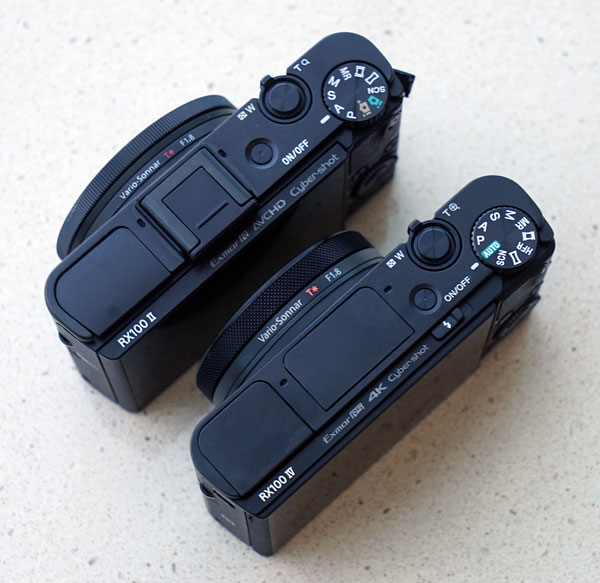
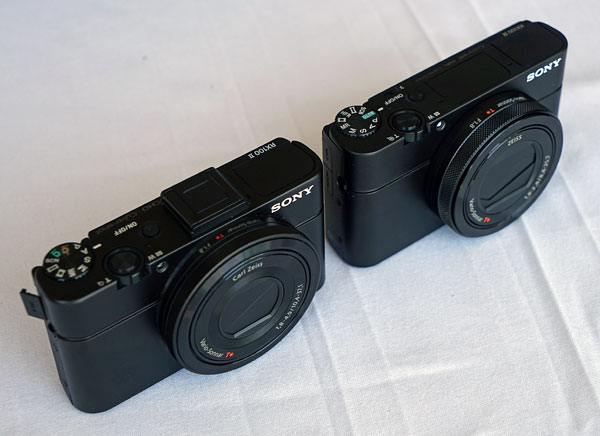
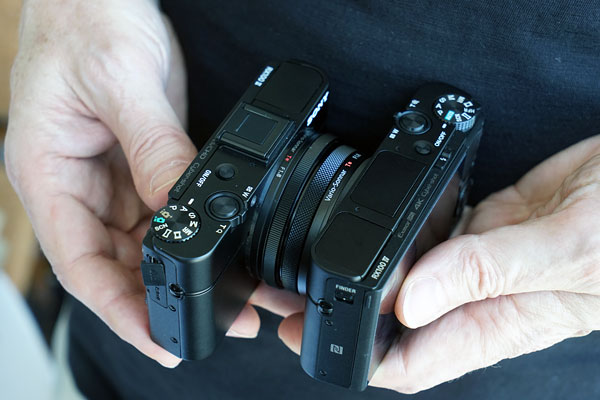
3:30PM ET: A couple of things about the A7R II that we wanted to call more attention to. First of all, the phase-detection AF points cover 45% of the full-frame image area. According to Sony, that's more than any other full-frame PDAF system. Also, it bears repeating that the in-body image stabilization system is five-axis. That means it doesn't just do translational and pitch/yaw stabilization, but also roll stabilization. (That's exactly the kind of motion you tend to induce as you press the shutter button.) Five-axis stabilization of a full-frame sensor is seriously impressive.
We're still filtering through our notes to see if there's anything we missed, and endeavoring to get your questions answered as well. More in-depth writeups of all three cameras are on the way, as well, once we've had a moment to get the cameras into our database...
3:40PM ET: Here's an interesting fact about the Sony A7R II: Its brand-new shutter unit isn't just better at reducing vibration. It's also significantly quieter -- in fact, Sony tells us it's twice as quiet as that in the original A7R. And if you need to keep vibrations to the absolute minimum, you can also shoot with an electronic shutter.
Also, the new five-axis image stabilization system is said to have a corrective range of 4.5 stops...
3:45PM ET: Concerned that your lenses might hold you back from taking advantage of the Sony A7R II's whopping 42-megapixel full-frame sensor? Fear not: Sony tells us that all of its FE lenses were designed with this level of resolution in mind, and won't limit your resolution below that which the camera is capable of discerning.
3:47PM ET: Another Sony A7R II claim that has us hopping from foot to foot in anticipation of putting this beauty in the lab. Sony is claiming a whopping 40% improvement in autofocus speed, as compared to that of the original A7R. How did they achieve such a big step? It's down to the higher throughput from the image sensor, apparently. Look for subject tracking to be dramatically better than that of the earlier camera!
And interestingly, Sony tells us there should be a significant improvement with third-party lenses as well, not just first-party glass. In fact, the company is claiming that this is the very first mirrorless camera that can focus using SLR camera lenses just as fast as would the mirror-based camera!
3:58PM ET: Another cool fact for you: According to Sony, the A7R II's viewfinder optics provide the highest magnification of any full-frame camera in the world today, at 0.78x.
4:15PM ET: Moving on to the Cyber-shot RX-series cameras, we just want to call attention once more to their high frame-rate modes. Depending on whether you're using PAL or NTSC modes, you can shoot up to 960 or even 1,000 frames per second for as long as four seconds, depending on the resolution. Play back at 24 frames per second -- you can choose the playback speed in-camera to encode into the video file -- and what's a four-second clip as you record it could be close to three minutes long once played back!
4:16PM ET: Worried that your reflexes won't let you take advantage of the high frame-rate shooting to its full? Fear not: You can select between start or end-trigger options. The latter will let you tell the camera when to stop the clip, rather than when to start it, so you don't have to rely on your reflexes to start capture right before the crucial moment...
4:19PM ET: We mentioned that the Sony RX100 IV and RX10 II are the first Cyber-shot series cameras capable of recording 4K video. We also told you that the RX100 IV was limited to a four-minute clip length, most likely due to heating concerns given its extremely compact body size. What we neglected to mention in the rush earlier on, though, was that the Sony RX10 II should allow you to shoot 4K clips for as long as 29 minutes. (That's right, our old friend the European camcorder tax rears its head again.)
4:30PM ET: Did we mention that the Sony RX10 II and RX100 IV now allow a top electronic shutter speed of 1/32,000 second, thanks to their new stacked CMOS image sensor? And check this out: When talking about rolling shutter, Sony suggested that its high-speed readout could eliminate this annoying issue entirely. If that's accurate, it could be a game-changer for anybody shooting from unstable platforms -- say goodbye to the nausea-inducing jello effect in shots from imperfectly-balanced drones or cameras mounted on moving vehicles. We're really hoping this one pans out once we get these cameras in the lab for testing!
4:35PM ET: Another nugget of info that gets us excited: Sony tells us that the RX100 III sports faster autofocus, and can achieve a focus lock in just 0.09 seconds. Even if that's simply the time taken to determine a focus lock when the camera was already in focus to start off with, it's pretty impressive! By way of comparison, we timed the RX100 III at 0.011 seconds even when prefocused, and at around 0.15 seconds when autofocus came into play.
4:38PM ET: One final point, as we reach the end of our frantically-typed notes. This one relates to the new CLM-FHD5 monitor which we showed you earlier, and which has a 5.0-inch screen diagonal. Want to know when you'll be able to get your hands on one? You'll have to wait just a little longer to find out, as Sony has stated that both pricing and availability for this monitor are still to be determined.
And that brings our live coverage of Sony's press conference to an end. Our team is still on-site in New York, giving the cameras a close look over and endeavoring to answer your questions. Back here at Imaging Resource headquarters, we've just published our hands-on Sony A7R II preview and Sony RX100 IV preview, and now the Sony RX10 II preview is available, as well. We've also completed our A vs B comparison pages that pit their specs and features against their key rivals. Check them out below!
-
Sony RX100 IV comparisons
-
Sony RX10 II comparisons
-
Sony A7R II comparisons
Got any questions you want answered? Leave them in the comments below and we'll be sure to get answers for as many of them as we can, once the press conference is over!